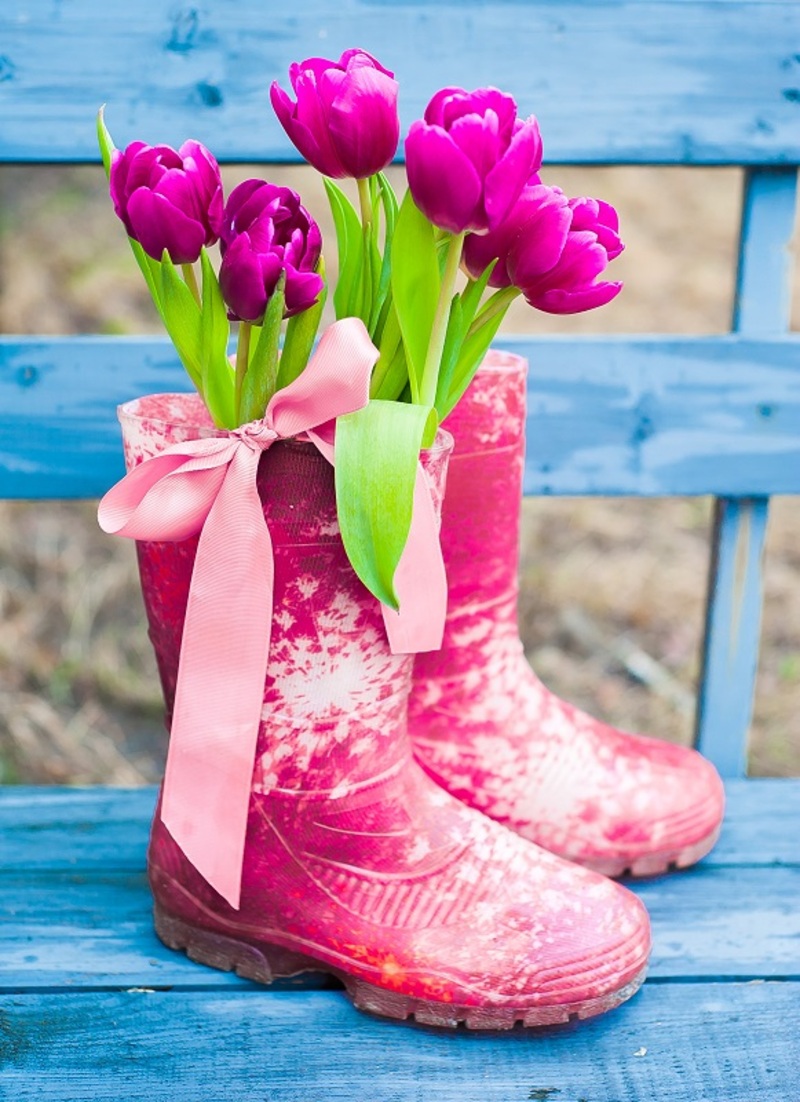Simplify Flower Care with These Uncomplicated Steps
Posted on 18/08/2025
Simplify Flower Care with These Uncomplicated Steps
Are you passionate about flowers but find yourself overwhelmed when it comes to their care? You're not alone. Many plant enthusiasts struggle to balance their busy schedules with the demands of flower maintenance. Fortunately, flower care doesn't have to be complicated. In this thorough and easy-to-follow guide, we'll break down uncomplicated steps that will help you simplify flower care, ensuring your blooms stay vibrant, healthy, and beautiful--all with minimal effort!

Why Is Simplifying Flower Care Important?
Flowering plants grace our homes, gardens, and balconies with breathtaking color and fragrance. However, overcomplicating their care can lead to frustration, wasted time, and sometimes even disappointment when flowers wither. By streamlining your flower maintenance routine, you will:
- Save time and energy
- Increase the health and longevity of your flowers
- Reduce the risk of plant diseases
- Boost your confidence as a flower caregiver
Let's dig into the essentials of floral care and how you can easily incorporate them into your routine.
Understanding Your Flowers' Basic Needs
1. Light Requirements
One of the core elements of easy flower care is understanding the light needs of your plants. Some flowers thrive in full sun, while others prefer partial shade or indirect light.
To simplify light management:
- Group flowers with similar light preferences together for more efficient care.
- Use a plant app or label each pot when you first get your flowers to remember their needs.
- For indoor flowers, rotate pots every few weeks to ensure even growth.
Pro tip: If your flower starts leaning toward a window, it's seeking more light! Adjust placement promptly.
2. Nutrition: Watering
Watering is where many new and experienced gardeners go wrong. Overwatering is a top cause of plant death, followed closely by underwatering.
- Check soil moisture with your finger. If the soil is dry about an inch down, it's time to water.
- Water early in the morning to reduce evaporation and prevent fungal diseases.
- Use well-draining soil and pots with holes to allow excess water to escape.
- Group thirstier and drought-tolerant flowers separately -- this makes consistent care much easier!
Tip: Learn your specific flower's moisture preferences for truly easy flower care.
3. Feeding: Fertilization Made Simple
A little boost from fertilizers can keep your flowers healthy but beware of over-fertilizing. Here's how to keep it easy:
- Use a slow-release fertilizer for most flowering plants. This way, nutrients are delivered consistently over time.
- Follow the instructions on the packaging--when in doubt, start with half the recommended amount.
- Most flowers only need fertilizer during their growing and blooming season (typically spring and summer).
4. Temperature and Humidity
Whether your flowers are indoors or outdoors, temperature and humidity matter. Most common flowering plants do well at typical room temperatures but keep these guidelines in mind:
- Keep flowers away from drafts, heaters, or air conditioning vents.
- Group plants together during dry weather to increase humidity.
- For tropical flowers, occasional misting can help mimic their native environments.
Uncomplicated Steps to Simplify Flower Care
Step 1: Choose Low-Maintenance Flowers
If you lead a busy lifestyle or are new to plant care, start with varieties that require little attention. Some popular, fuss-free choices include:
- Pothos -- Known for its durability and adaptability.
- Peace Lily -- Tolerates low light and infrequent watering.
- Marigold -- Resilient outdoor annual with bright blooms.
- Geranium -- Flourishes indoors or out with minimal upkeep.
- Zinnia -- Vibrant, drought-tolerant, and easy to grow from seed.
Starting simple lessens the learning curve and encourages enjoyment, setting the stage for more intricate species later.
Step 2: Establish a Routine
- Designate set days for watering and fertilizing. Automating the process reduces the likelihood of neglect or over-care.
- Consider using reminders or a simple plant care calendar app.
Step 3: Group by Care Needs
Organization is the fastest path to simplified flower care. Grouping flowers by light, water, and humidity needs ensures that you're not overthinking each plant individually every time.
Step 4: Smart Placement and Tools
- Keep watering cans, mist bottles, and pruners in a handy spot.
- Arrange flower pots for easy access--you're more likely to notice and address issues quickly.
Step 5: Prune and Deadhead Regularly
While it may sound complicated, pruning and deadheading (removing old flowers) are simple and vital steps:
- Prune yellow or brown leaves weekly. This prevents disease and encourages new growth.
- Deadhead spent flowers to promote continual blooming.
- Use clean, sharp scissors to avoid damage.
Maintenance takes just a few minutes but keeps your flowers flourishing!
Step 6: Learn Basic Pest Management
Pests can be discouraging, but a few uncomplicated tricks help avoid infestations:
- Wipe leaves gently with a damp cloth to remove dust and potential pests.
- Inspect your flowers weekly for small bugs like aphids or spider mites.
- If bugs appear, use mild soap water or neem oil solution as an eco-friendly remedy.
Step 7: Repot as Needed
Roots outgrowing their containers will impact blooms. Simplify this by:
- Checking every 6-12 months for roots at the pot's drainage holes.
- Repotting in a container one size larger when necessary using fresh potting soil.
Tips to Streamline Flower Maintenance
Stick to these uncomplicated flower care tips for thriving, beautiful blooms without the struggle:
- Mulch garden beds to retain moisture and reduce weeds.
- Use self-watering pots for low-maintenance indoor flower care.
- Automate watering outdoors with a drip irrigation system or soaker hoses.
- Label plant pots with their name and care instructions--future-you will thank you!
- Practice consistent but gentle decluttering of dead leaves and faded stems.
Common Flower Care Mistakes and How to Avoid Them
Even the most dedicated plant parents make mistakes! By understanding and steering clear of these typical blunders, you ensure an easier, more satisfying flower care experience:
- Overwatering: Always allow the top layer of soil to dry before watering again. Soggy soil can cause root rot, one of the biggest flower killers.
- Ignoring sunlight requirements: If a bloom isn't thriving, assess its light exposure and adjust accordingly.
- Poor drainage: Choose pots with drainage holes or add a layer of gravel at the base for proper water flow.
- Crowding plants: Overcrowding can restrict air flow, increasing disease risk. Give each plant enough room.
- Forgetting to clean tools: Dirty pruners or scissors can spread disease. Wipe them down after every use.
Seasonal Uncomplicated Flower Care
Spring and Summer
- Increase watering as flowers enter their growth phase.
- Fertilize once a month with a balanced fertilizer.
- Prune and deadhead more often to keep blooms coming.
- Watch out for increased pest activity and address promptly.
Fall and Winter
- Reduce watering as growth slows down.
- Hold back on fertilization until spring.
- Check for drafts and move tropical or sensitive flowers away from cold windows.
- Let some garden flowers go dormant as part of their natural cycle.
Adapting to the seasons is one of the easiest ways to keep flower care scratch-free.
Best Tools and Products for Simple Flower Care
Having the right tools takes the hassle out of caring for your at-home bouquet. Consider these must-haves:
- Self-watering pots -- Reduce how often you need to water.
- Moisture meters -- Take the guesswork out of watering.
- Quality potting mix -- Supports healthy root growth and better moisture retention.
- Pruners or sharp scissors -- For clean, easy cuts.
- Rotating plant stands -- Ensure even light exposure indoors.
- Neem oil spray -- A natural remedy for common pests.

Frequently Asked Questions About Easy Flower Care
- How often should I water my flowers?
It depends on the species, environment, and pot size. Most indoor flowers need water when the top inch of soil dries out. - What is the easiest flower to take care of?
Pothos, peace lilies, and zinnias are well-known for their resilience and minimal needs. - Do all flowers need direct sunlight?
No, some flowers (like peace lilies and orchids) thrive in low to moderate light conditions. - Can I revive a dying flower?
Yes! Trim dead leaves or stems, check for pests, adjust light and watering schedules. - What is deadheading?
Removing spent flowers to promote more blooms and keep the plant tidy.
Conclusion: Enjoy Blooms Year-Round with Simple Care
Simplifying flower care is truly about understanding what your blooms need and removing unnecessary steps from your routine. By choosing easy-care species, grouping by needs, setting a schedule, and keeping a few clever tools on hand, you'll find that keeping thriving, lovely flowers is well within reach for anyone.
Remember, the key to enjoying flowers without stress is to keep it basic--and as you gain confidence, you may even discover the joy of nurturing more delicate or demanding species.
Take pleasure in your blossoming oasis with these uncomplicated solutions for flower care, and watch your home flourish with fresh color and fragrance all year long!
For more flower care tips and to turn your thumb greener than ever, keep exploring our articles and share your own experiences with uncomplicated flower care in the comments below!
Latest Posts
Birth month flowers offer a unique glimpse into personal traits
Simplify Flower Care with These Uncomplicated Steps
Five Exquisite Flowers to Gift on Valentine's Day
A Floral Tale: Peony Flowers, Their Symbolic Significance, and Colors







